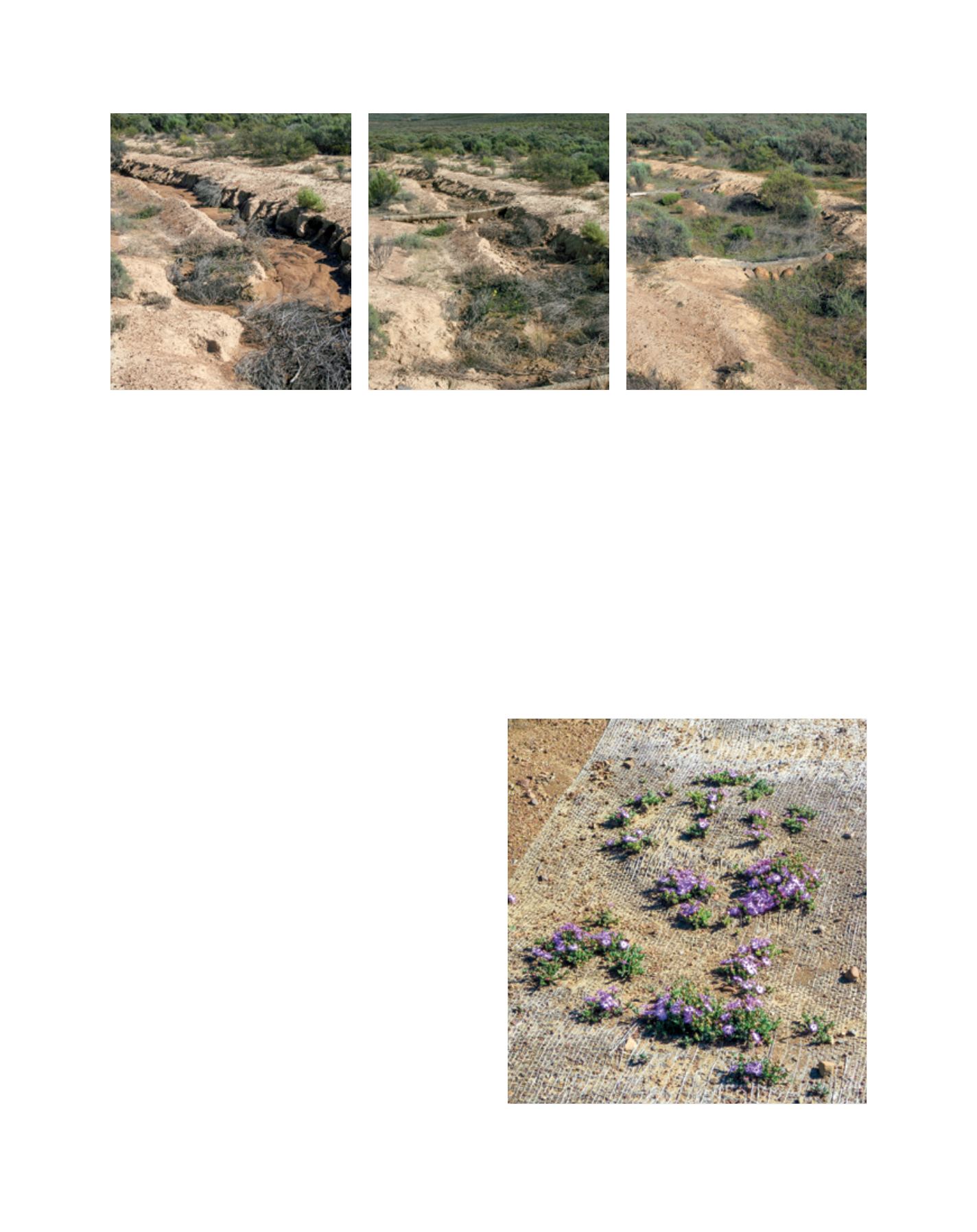

[
] 109
observe which approaches would prove to be most effective
and economically feasible. Repeat photography has been
used to visually record the impacts over time, and to enable
comparison of the different interventions.
In practice the approach followed on Avontuur has been
to first analyse the problem and differentiate between the
causes and effects of disturbances and degradation. The
focus is then on the causes: addressing the effects without
remediating the causes will absorb resources without lasting
impact. Wherever possible interventions are designed to
start at the top of the affected catchment and work progres-
sively downslope. We have sought to work with the forces
of nature so that recovery becomes self-sustaining, and as
far as possible to use only biodegradable materials. These
have primarily been inexpensive local materials such as
wood harvested from alien invasive trees, abundant shrubs
(the toxic and invasive
Galenia africana
and the unpalatable
Elytropappus rhinocerotis
) and sawdust from local sawmills.
In addition use has been made of jute geotextile. These
materials have been used in various combinations for filter-
ing run-off water in gullies, and for re-establishing cover
on denuded soil surfaces.
A number of approaches have been tested to determine
cost-effective ways of re-establishing vegetation on denuded
surfaces. These have included trials in which the soil surface
was broken and fertile topsoil, sawdust and manure were
mixed in. In some cases seeds collected on the property were
sown into the matrix. Geotextile was used to stabilize soil
surfaces and hold moisture and wind-blown soil particles.
Encouraging results have been achieved.
The work on Avontuur has generated much interest among
the small-scale farming community from the southern part
of the Bokkeveld Plateau, some of whom were employed
in the off-season to undertake rehabilitation work on the
property. A number of interactive workshops have been
held, in the course of which participants were introduced
to the approach followed on Avontuur, and then asked to
apply the approach in practice in a small catchment that had
not previously been rehabilitated. Working in small teams,
the participants analysed the problem, identified the causes
and designed and implemented measures to address these,
using materials supplied to them. The results of these train-
ing interventions can be seen elsewhere on the Bokkeveld
Plateau, where farmers have applied them in practice on
degraded soils derived from shale.
Apart from the farming community, the results on
Avontuur have been shared with scholars from the local
school, and with staff of conservation agencies and non-
governmental organizations. All have left their mark on the
landscape, and are able to return and see how their efforts
and the work of others have affected the landscape. In a
rapidly changing world Avontuur offers the opportunity to
witness the slower processes of regeneration and recreation
of nature’s self-sustaining ecosystems.
The impact of gully rehabilitation over three years (left to right)
Images: N Oettlé
Succulent seedlings establish on previously bare surfaces covered
with geotextile
Image: N Oettlé
L
iving
L
and
















